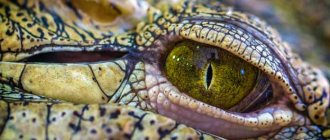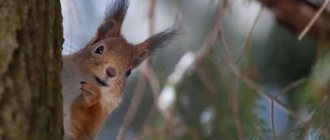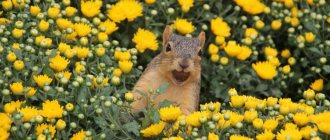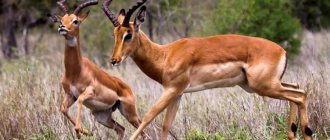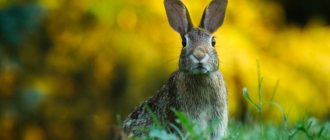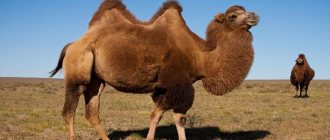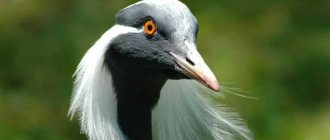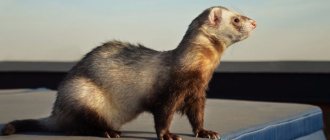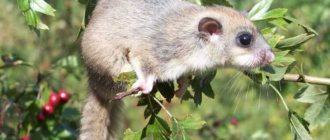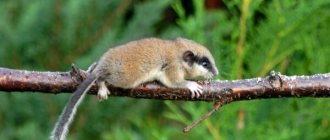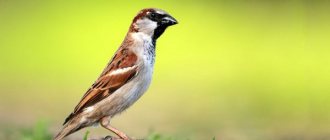Light-eyed animals
The antelope got its name from the Greek “antolope”, which means light-eyed. Thanks to the special properties of her eyes, she sees almost everything around her. Nowadays, almost all species of antelope, and there are about 80 of them, can be found in the savannas of Africa. They live in different climatic conditions. While some can survive in bushes, forests or savannah, others live in treeless steppes or in arid deserts.
Here is just a short list of antelopes. There are about 100 species in the world.
Impalas
(Aepycerotinae). Impala ( Aepyceros melampus
) at different times were attributed either to the gazelle subfamily or to the cow antelope, but now this species is usually classified as an independent subfamily. The species is found in savannas and woodlands, usually near water, from Kenya and Uganda to Angola and northern South Africa. The animal is very graceful; height of males at the withers up to 1 m, weight 80 kg, lyre-shaped horns more than 90 cm long; hornless females are slightly smaller and weigh a little more than 50 kg. The coat is shiny, red, there is a white “eyebrow” above each eye, a vertical black stripe on the back, on the hips and on the tail, the lower parts of the body are white. Of all the antelopes, only the impala has a tuft of coarse black hair on its hind legs above the “heel” of the hoof, for which it is also called the black-footed antelope. Although wild numbers of impala have been severely reduced in much of South Africa due to overhunting, they remain a major game species in game reserves and have been introduced beyond their original range.
Antelope Kudu
photo Piet Grobler
Kudu (Tragelaphus strepsiceros) are one of the largest African antelopes. The fur of these graceful animals is brown with 6-10 vertical light stripes along the body. Males have impressive spiral-shaped horns growing on their heads, about 1.5 meters long.
photo Fons Butts
The kudu wears its luxurious horns proudly, and on occasion it menacingly displays them to its opponent. As soon as the enemy tries to get around the antelope, the kudu turns its horns towards him again. And when a small herd of antelopes is resting in a meadow, they lie down on the grass in a special way: as if forming a large star, always looking in different directions so as not to miss danger.
Gazelles
(Antilopinae, or Gazellinae). The taxonomy of this subfamily remains controversial; in the latest works it is divided into three large groups (tribes): dwarf antelopes (Neotragini), gazelles (Antelopini) and saigas (Saigini). The first include small African ungulates with short straight pointed horns; These are the jumping antelope, oribi, stenbok, grysbok, suni, pygmy antelope, tiny antelope, dik-dik and beira. The second tribe unites African and Asian antelopes of medium size, usually with lyre-shaped horns. These include the gazelle, garna, gerenuk and dibatag. The tribe Saigini includes two medium-sized Asian species, somewhat ibex-like, the orongo and the saiga.
The pygmy antelope and the jumping antelope can be considered typical representatives of the Neotragini tribe. Skipper antelope, klipspringer, or sass ( Oreotragus oreotragus
), lives in the mountains throughout eastern Africa - from Ethiopia to the Cape of Good Hope.
She stands, runs and jumps, relying only on the tips of her hooves, the rubber-like structure of which helps her confidently climb steep slopes and jump from rock to rock. Like other antelopes of this group, only males have horns (with the exception of the Tanzanian subspecies O. o. schillingsi
). Height at withers 60 cm, weight 18 kg, horns length up to 15 cm.
Garna ( Antilope cervicapra
) is an Asian representative of the gazelle tribe, inhabiting semi-desert plains and dry woodlands in India. This is one of the few species of antelope in which males and females have different colors: the first are dark brown or black on top; the second ones are yellow-brown; both are white below and around the eyes. Back in the 19th century. The number of garna was approximately 4 million individuals, but uncontrolled hunting and habitat destruction (plowing of land) led to its sharp decline, and in India there are now not even 8,000 heads of this species. In 1906, the garna was introduced to Argentina, in 1932 - to the USA (Texas) and in 1912 - to Australia. In Argentina and the United States, fairly large populations of the species have now naturalized; their total number (about 10,000 in Texas alone) is greater than in India. In Australia, the herd number reached several hundred, but during the Second World War many individuals were shot by soldiers, and the last herd died out in the mid-1980s. In 1986, a secondary introduction was undertaken in the state of Victoria (east of Melbourne), which turned out to be successful. The height of the garna at the withers is up to 85 cm, weight is 45 kg, the length of the horns (only in males) is up to 70 cm.
Springbok ( Antidorcas marsupialis
) means "jumping goat" in Afrikaans. This antelope actually skips and sometimes jumps 5-6 times in a row up to 2 m in height. Similar jumps, characteristic of gazelles and some other lowland antelopes, when all legs are directed vertically downwards and the head and tail are raised up, are sometimes called “lookouts”. However, in the springbok they are very peculiar: the animal arches its back sharply, lowers its neck and tail and gathers its hooves together. Its other feature is a longitudinal fold of skin (somewhat reminiscent of the pouch of marsupials, Marsupialia, from which the specific epithet of the species comes), stretching from the middle of the back to the base of the tail and covering the dazzling white fur. When a springbok is disturbed by something, it moves the edges of the fold, exposing a ridge of white hair that turns into protruding white fur on the rump and tail. The resulting "white flash" is visible from a considerable distance, especially if the animal is jumping. In earlier times, springboks sometimes migrated, gathering in herds of several tens of thousands of animals; however, now even a herd of one and a half thousand is considered rare. Previously, the species was widespread in the low-grass semi-deserts of southwest Africa, but subsequently was almost completely exterminated in some places, and then reintroduced into nature reserves and game reserves, not only in the territory of its original range, but also beyond its borders. The top of the springbok's body is reddish-brown, the bottom is white; they are separated by a dark brown stripe running along the sides from the upper parts of the front legs to the hips; the head is white with dark brown stripes from the base of the horns to the corners of the mouth. Height at withers up to 90 cm, weight 45 kg, horn length (in both sexes) up to 48 cm.
Gazelles ( Gazella
) - small slender animals with a fawn back and lighter underparts, with the so-called.
a facial pattern of dark and light stripes on the head, a dark longitudinal stripe on the sides and a black end of the tail. Lyre-shaped horns, usually present in both sexes, are covered with ring-shaped transverse projections, especially pronounced at the base. These are very fast antelopes, reaching speeds of almost 100 km/h. They live in deserts and semi-deserts from North Africa to China. The genus includes 16 species, including the common gazelle ( G. gazella
) from the Arabian Peninsula, the Dorcas gazelle (
G. dorcas
) from North Africa and Israel, Thomson's gazelle (
G. thomsoni
) from East Africa and Grant's gazelle (
G. granti
) from the northeast and east of this continent. The last species can be considered typical of the genus, although it is somewhat larger than the others. The color is generally fawn, with a faint stripe on each side; in the middle of the muzzle there is a reddish-brown stripe with a wide white border running from top to bottom. A large white “mirror” is surrounded by a narrow black stripe. Height at withers up to 100 cm, weight up to 80 kg, horn length in both sexes up to 80 cm.
Less typical of the tribe Antilopini is the dibatag ( Ammodorcas clarkei
), found in Ethiopia and Somalia, and the gerenuk, or giraffe gazelle (
Litocranius walleri
), from East Africa. Both species are distinguished from other gazelles by their long necks and legs, which give them the ability to eat leaves at a fairly high altitude; In addition, when feeding, these antelopes are able to stand on their hind legs.
The tribe Saigini includes Orongo, or Chiru ( Pantholops hodgsoni
), distributed mainly in the northern part of Tibet ("chiru" is a word probably Nepalese), and the saiga antelope, or saiga (
Saiga tatarica
), from the steppes and semi-deserts of Eastern Europe and Asia. Orongo lives in the steppes at an altitude of 3700–5500 m above sea level. His coat is short, thick, sandy-brown in color; height at the withers up to 100 cm, weight up to 50 kg, length of sharp horns (only in males) 70 cm. This is an inhabitant of cold, dry plains in winter. One of the distinctive features of the species is a humpbacked muzzle with a soft, movable proboscis hanging over the mouth. At the end of the proboscis there are nostrils leading into sac-like cavities, which are considered a device for warming and humidifying inhaled air or for extracting heat from exhaled air. The thick winter fur of the saiga is very light, clay-gray, while the summer fur is yellowish-red and relatively sparse. The horns (only on males) are translucent, yellowish, up to 25 cm long. The once huge herds of saigas have now been greatly reduced as a result of uncontrolled shooting, in particular because of the horns used in Chinese folk medicine. Height at withers 80 cm, weight up to 68 kg.
Roe deer antelope, or pelea
Roe deer antelope, or pelea (Pelea capreolus) is a resident of South Africa. It has a length of 1.15 to 1.25 m and weighs between 20 and 30 kg. Roe deer antelope is active during the day and tries to rest in the shade at midday. These antelopes can form two types of social groups. The first consists of females and one dominant male (usually about 8 animals, but can reach 30). Another social group consists of solitary males. During mating, fights often occur between dominant and lone males, and often one of the participants in the fight may be killed.
Duikers
(Cephalophinae). They are divided into two genera: crested or forest duikers ( Cephalophus
) with 18 species and bush duikers (
Sylvicapra
) with one species.
They all live in Africa, south of the Sahara. Forest duikers usually inhabit dense forests, while bush duikers prefer open spaces covered with bushes. These antelopes live alone or in pairs; They feed on a variety of plant foods, and on occasion they also eat small animals such as mice or chicks from nests on the ground. Males and females are similar in appearance, although the latter are somewhat larger. Both sexes have short, straight horns; females of the blue duiker ( C. monticola
) sometimes lack them, and females of the common or gray duiker (
Sylvicapra grimmia
) do not have them at all.
Between the horns grows a long crest, or comb, of black hair, which is reflected in the name of the genus Cephalophus
(Greek cephal - head, lophos - comb).
The smallest species of the subfamily is probably the blue duiker, so named for its brownish-gray color with a blue tint; at the withers it is slightly higher than 40 cm, its weight is 9 kg, the length of the horns is no more than 10 cm. The largest yellow-backed duiker ( C. sylvicultor
) has a height at the withers of almost 90 cm, a weight of 80 kg, and horns up to 21 cm long.
Wildebeest
wildebeest (Connochaetes taurinus) can be found in a wide variety of habitats, from dense scrub to open floodplain forests.
However, these antelopes seem to prefer savannas and plains with fast-growing grasses, as well as soil with moderate levels of moisture. The weight of wildebeest ranges from 118 kg to 270 kg. Adult males are usually darker than females. Wildebeests are marked with dark vertical stripes on their shoulders and back. They also have a mane and beard, usually white. Tags Antelopes
Reproduction and development
Photo: Patrick Duvanel
Antelopes become sexually mature at approximately six to eight months of age, with males typically developing more slowly than females. Pregnancy (gestation) lasts from four to nine months, depending on the species. The female usually gives birth to one baby, but sometimes twins can be born. In some species, the female leaves the herd to give birth to her young in a well-protected area.
Vulnerable baby antelopes have two options for survival:
- set off immediately after birth under the protection of the herd. For example, newborn wildebeest can walk within minutes of birth and join the herd with their mother shortly thereafter.
- hide from predators. For example, eland and roan antelope babies prefer to avoid predators. The mother will hide the cub among bushes, stones, tall grass or thickets. The female joins the herd, returning periodically to feed the young, which silently hides in a shelter. When the young are strong enough, which can happen in a week or a month, depending on the species, they join the herd.
Natural enemies
Antelopes have many enemies - lions, leopards, cheetahs, hyenas, eagles, vultures, poisonous snakes, crocodiles. The antelopes flee from all of them. These fast-footed animals run at speeds of 50 to 100 km/h. It is interesting that within a couple of hours a baby antelope can stand steadily on its legs, and on the second or third day after birth it runs along with the adults.
Antelopes have very acute hearing and excellent vision. Their eyes are designed in a special way, thanks to which antelopes can see everything around them.
Antelopes are excellent jumpers. They make giant leaps up to 3 meters in height and up to 10 meters in length.
Appearance
Each type of antelope has its own appearance:
- Height - from 25 cm to 2 meters.
- Weight - from 3 kg to 700 kg.
- They can also have different colors - red, brown, dark gray or black. The body can be decorated with longitudinal or transverse stripes.
- Everyone’s horns are also different - twisted like a screw, smooth and sharp, like sabers, wide, like the blades of a screw.
What is the same for all antelopes? These are incredibly large, slightly elongated beautiful eyes framed by thick black eyelashes. The Greeks called antelopes "clear-eyed."
